May my prayer be set before you like incense; may the lifting up of my hands be like the evening sacrifice.
Pslam 141:2
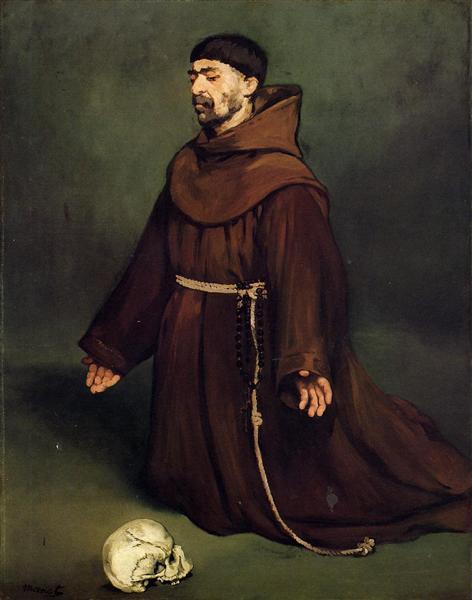
So whether you eat or drink or whatever you do, do it all for the glory of God.
1 Corinthians 10:31
Last updated: Jan 5, 2025
Corresponding Emotions: Reverence and Intimacy
This wing has 27 total flaps (exercises).
Let every step, every breath be for God.
This is the dance of worship. The tabernacle’s inner court is where true worship occurs. It also has the altar of incense where deep prayers rise up. The tabernacle is completely available to those who have accepted Jesus into their hearts.
The Worship Wing can be seen as the proto-wing, the source from which all other wings originate. While it holds a foundational role, it isn’t placed first because Praise (Wing 1) serves as a more accessible gateway. However, Praise, along with every other wing, is ultimately a subcategory of Worship, each reflecting a unique facet of this core essence.
Its core essence is expressed in the 1st incense aroma of Frankincense representing worship.
21 Flaps
3.1: Breath of Angels
Then the Lord God formed a man from the dust of the ground and breathed into his nostrils the breath of life, and the man became a living being.
Genesis 2:7
This is an across the floor exercise where one enters into an angelic body or angel world. The inhale is wholesome air. Each inhale also physically lifts up the body. Upon exhale is our ability to surrender and this brings down the body. Each inhale floods every single cell with God’s Love. Each exhale lets go of anything the cells don’t need. Give yourself in love.
The breath can go a step further and become God’s breath, but only if one surrenders to God. God’s breath is another way of seeing the Holy Spirit.
Variation: Inhale as God’s breath of grace and exhale as sharing grace to the world/neighbor.
Video Clip Example: In the Theokinesis piece A Living Sacrifice from 20:55 to 21:15, I walk away from the audience with the breath of angel arms like silk banners in a gentle air.
3.2: God’s Breath Fills the Space
Fill your lungs deeply with God so that you can breathe Christ into the world.
Caryll Houselander
This is an across the floor exercise that forms a 1 to 1 correspondence with the lungs and the space. The inhale is a wholesome breath. From this inhale, one is made to move forward across the other end of the space and backwards when exhaling. Work with different speeds connected to the breath.
The breath can be taken further by completely surrendering to God in which case, the breath might become God’s Breath or The Holy Spirit.
3.2a: Variation 1
One can also do the same along the walls of a room, returning back to where one began.
3.2b: Variation 2
A group can form a circle, each participant facing each other. Each inspiration goes toward the center with each expiration returns back to the circle.
3.3: Five Minutes to Live
One only has 5 minutes left of life and wants to give this final dance to God.
3.4: Becoming-Incense
Take on incense world which are prayers sent out to God.
3.5: The Gift
Before explaining this ritual, a preliminary clarification is needed. In Sirach 40:1-3, humanity is expressed as coming from the womb and returning to the mother of all. This mother can be viewed as Holy Mother Mary/Creation yet like all saints or angels, Mary points to The Glory of The Most High. While Creation can be heavily revered, it is God The Creator alone who is the only one to worship.
- Take time to bring the arms down into Earth/Mother/Mary/Creation, deep down into the earth. Then feel around for a precious treasure or rock.
- Once found, slowly bring this treasure up toward God as an offering.
- Do you receive something back? If not that is okay since we do not expect anything back in return. The biggest gift already is in our ability to give in the first place.
- If you do receive something, gradually bring God’s gift down to share with Earth/Mother/Mary/Creation.
- Does Earth give you something in return? Whether or not, repeat the cycle with Mother’s gift or your own found treasure.
Video Clip Example: In the Theokinesis piece A Living Sacrifice from 7:10 to 8:10, An explorer has found deep in the ground something like a very rare emerald. This emerald is reverently brought up to God in offering.
3.6: Christ’s Love
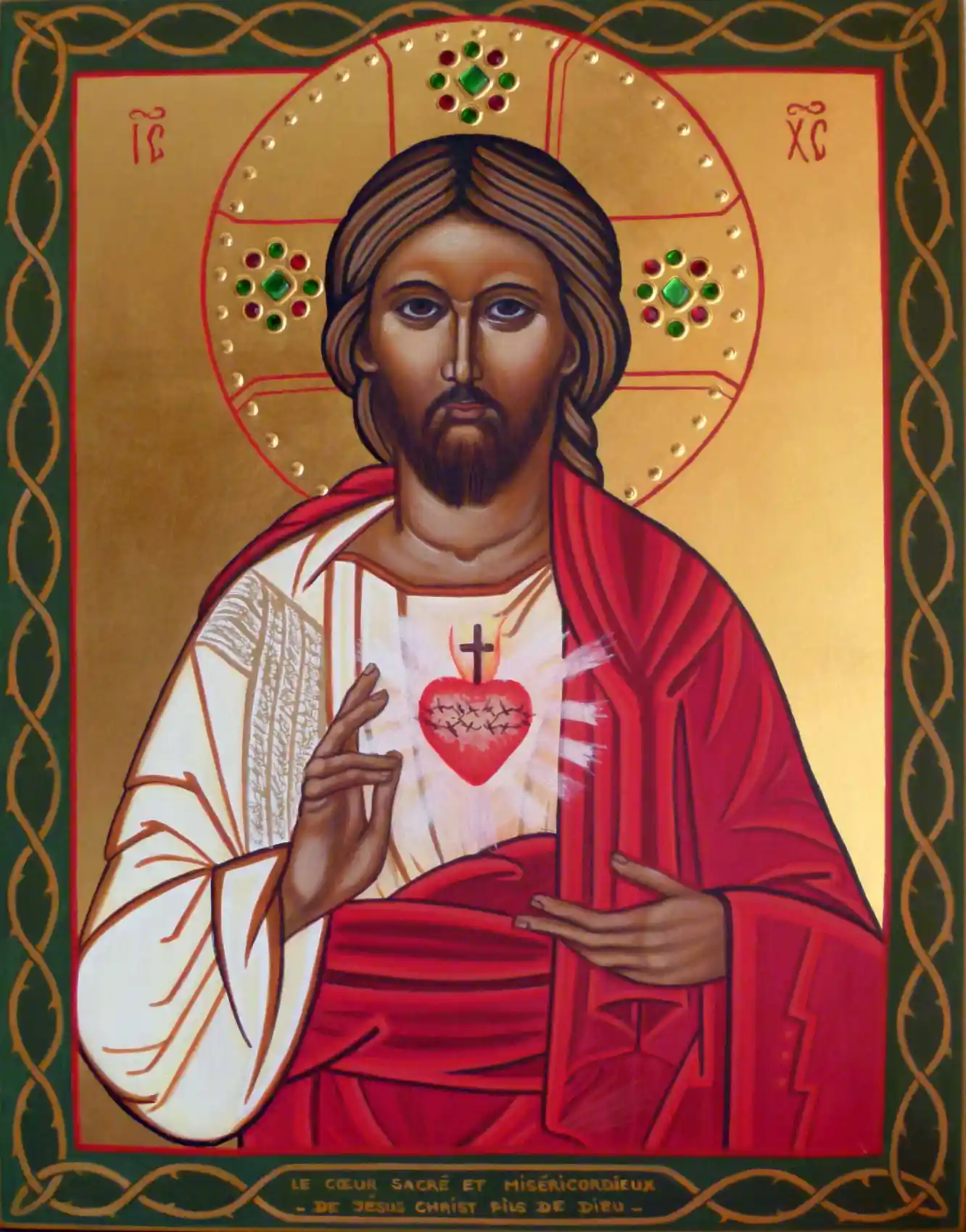
Dance what comes up when the following passages are recited about Christ’s Unconditional Love. One is encouraged to feel into it and if tears come, to let them happen. Tears for Christ are gold. Here are 10 passages.
Just as the Father has loved Me, I have also loved you; abide in My love.
John 15:9
Follow God’s example, therefore, as dearly loved children and walk in the way of love, just as Christ loved us and gave himself up for us as a fragrant offering and sacrifice to God.
Ephesians 5:1-2
Certainly the faithful love of the Lord hasn’t ended; certainly God’s compassion isn’t through! They are renewed every morning. Great is your faithfulness.
Lamentations 3:22-23
My lips praise you because your faithful love is better than life itself!
Psalm 63:3
Though the mountains be shaken and the hills be removed, yet my unfailing love for you will not be shaken nor my covenant of peace be removed,” says the LORD, who has compassion on you.
Isaiah 54:10
The Lord your God is in your midst — a warrior bringing victory. He will create calm with his love; he will rejoice over you with singing.
Zephaniah 3:17
I ask that you’ll have the power to grasp love’s width and length, height and depth, together with all believers. I ask that you’ll know the love of Christ that is beyond knowledge so that you will be filled entirely with the fullness of God.
Ephesians 3:18-19
Your faithful love is priceless, God! Humanity finds refuge in the shadow of your wings.
Psalm 36:7
I’m convinced that nothing can separate us from God’s love in Christ Jesus our Lord: not death or life, not angels or rulers, not present things or future things, not powers or height or depth, or any other thing that is created.
Romans 8:38-39
God so loved the world that he gave his only Son, so that everyone who believes in him won’t perish but will have eternal life.
John 3:16
3.7: Ascend with Humility, Seek Mercy Below
The Lord gives sight to the blind, the Lord lifts up those who are bowed down, the Lord loves the righteous.
Psalm 146:8
In this across-the-floor exercise, each upward movement symbolizes a positive phase in life, inspiring a humble bow in an upright position as an expression of gratitude. Subsequently, the downward movement signifies navigating challenging circumstances, akin to reaching rock bottom, all while extending upward gestures in a plea for God’s mercy.
3.8: Christ at the End of the Tunnel
This is an across the floor exercise, beginning with ash walk. One just died and finds themselves (as many near death experiencers recall) in a darkened space or void. Then from a distance appears a tiny spec of light. One is drawn to this light that emits love (sometimes like traveling extremely fast in a tunnel). This light grows bigger or we get closer and the love coming from expands exponentially. Once we reach the light, it feels like home, the feeling of being unconditionally loved, welcomed, and like having 10,000 hugs. A man appears dressed in light. He is Jesus Christ.
3.9: Sign of the Cross, Hairsplittingly Slow
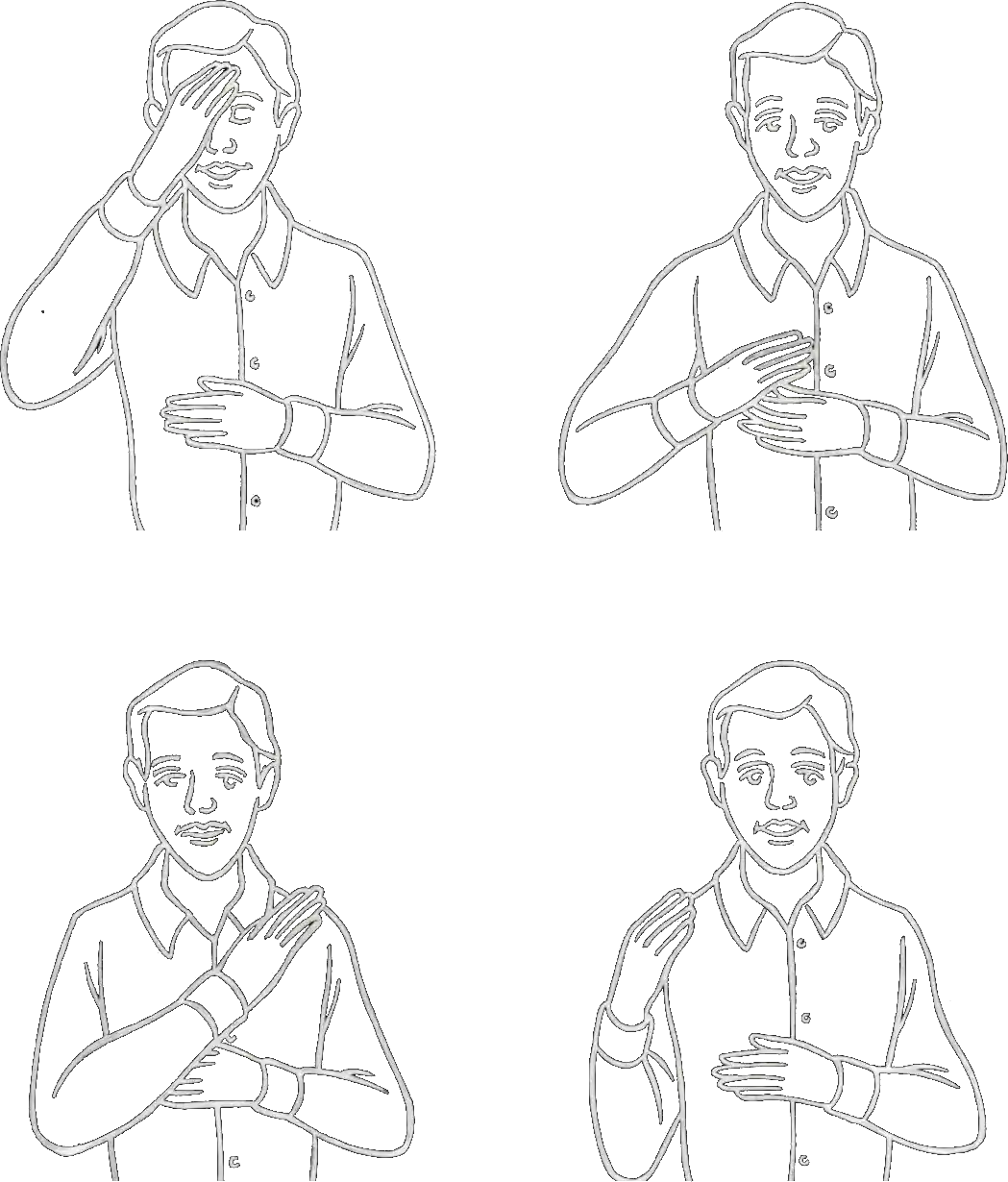
We can take 10 minutes to make the gesture of the sign of the cross, so the movement is extremely slow.
The sign is the classic sign of the cross composed (1) Father (touching forehead); (2) Son (touching heart); (3) Holy Spirit (touching left ad right shoulder). Optional to begin with and end with hands of prayer.
3.10: Falling in Love
So I got up and went out to the plain. And the glory of the Lord was standing there, like the glory I had seen by the Kebar River, and I fell facedown.
Ezekiel 3:23
3.10a: Constantly Falling in Love
He will be a holy place; for both Israel and Judah he will be a stone that causes people to stumble and a rock that makes them fall.
Isaiah 8:14
This is an across the floor exercise where we are constantly falling in love, falling for The Lord. When we recover, it is only to praise Him. Then we continue to fall across the space.
3.10b: One Dramatic Fall for the Lord
Utilizing the entire span of the space, engage in a single, impactful descent, symbolizing a dramatic fall dedicated to The Lord. The culmination occurs at the end of the space, showing the profound nature of the fall in worship.
3.10c: 1,000 Mini Falls for Christ
We can turn falls into tiny and subtle movement patterns. How is it like to fall for Christ but only 1 cm? How is it to fall 50 times in order to reach the floor? When one reaches the floor, how is it to fall again and again beyond the floor?
3.11: Funeral Procession of the Lover
This is a collective ceremony in which one individual is carried by at least four participants in a solemn procession around the room. The deceased participant has fully yielded their body to the divine love of God. The participants, in turn, present this surrendered body as an offering to God. After a period of time, the participant is gently placed on the ground, where a dance of resurrection begins.
3.12: The Jesus Prayer
The Jesus Prayer is composed of the following prayer: Lord Jesus Christ, have mercy on me, a sinner. It is based on The Parable of the Pharisee and the Tax Collector as follows:
Two men went up to the temple to pray, one a Pharisee and the other a tax collector. The Pharisee stood by himself and prayed: “God, I thank you that I am not like other people—robbers, evildoers, adulterers—or even like this tax collector. I fast twice a week and give a tenth of all I get.”
But the tax collector stood at a distance. He would not even look up to heaven, but beat his breast and said, “God, have mercy on me, a sinner.”
I tell you that this man, rather than the other, went home justified before God. For all those who exalt themselves will be humbled, and those who humble themselves will be exalted.
Luke 18: 10-14
Traditionally in both Orthodoxy and Catholicism, the Jesus prayer is meant to assist in non-stop prayer throughout the day with a rosary. The following are a series of exercises inspired by the Jesus prayer.
Jesus Prayer Walk
Every step internally recites a piece of the prayer: (1) Lord; (2) Jesus; (3) Christ; (4) have mercy; (5) on me; (6) a sinner. The speed and quality of the walk can also gradually change.
Jesus Prayer Breath
This is an across the floor exercise similar to Breath of Angels (Exercise #1) where each inhalation physically lifts one up, and each exhalation physically brings one down. With every inhalation, the words “Lord Jesus Christ” are recited internally, while on every exhalation the words “have mercy on me, a sinner” are recited.
Jesus Prayer Choreography
A short phrase of six movements are created connected to: (1) Lord; (2) Jesus; (3) Christ; (4) have mercy; (5) on me; (6) a sinner. Play with the timing, and utilize clouding liberally. The phrase can be looped, and various timings can be utilized.
3.13: Becoming-Candle-Flame
Let your light shine before men, that. they may see your good works, and. glorify your Father which is in heaven.
Matthew 5:16
A candle’s flame represents God’s presence or Holy Spirit. Become this flickering flame of prayer which is also reminiscent of the Jewish swaying known as shuckling.
3.14: Running to The Arms Of Jesus
Safe in the arms of Jesus,
Fanny Crosby (1868)
safe on His gentle breast,
there by His love o’ershaded,
sweetly my soul shall rest.
We run and run with outstretched arms (orans) as would a child to a mother or father to the arms of Jesus.
3.15: How Can I Love You?
Kazuo Ohno was known to give a prompt to improvise upon for an extended amount of time. So this is simply one prompt to dance like embodied Christian contemplation. What better way is there than to learn about how to love Lord Jesus Christ than to ask him yourself. Dance the question and any possible answers.
3.16: Object Offering
Ascribe to the Lord the glory due his name; bring an offering and come before him. Worship the Lord in the splendor of his holiness.
1 Chronicles 16:29
The exercise pairs well with being engaged at the last step (#4) of the Live Statue Your Neighbor exercise found in the Love Your Neighbor subsection of the Spirit page.
An object of good resonance is slowly taken across the space. At the end of the space is the Lord. Offer this object at his feet.
3.17: King David’s Offering
Preliminary to this exercise is Live Statue Your Neighbor found in the Love Your Neighbor subsection of the Spirit page. That statue in this exercise is King David and is to reside either in a chair or a small table that can be lifted easily. Those all around would have decorated King David with objects.
Once the installation is complete, a group of at least 4 people lift up the chair or table and process toward Lord Jesus Christ at the end. Almost at the end, the chair or table is placed down and King David begins to awaken in order to perform his dance rite of prostration for the Lord of his his whole being is the offering.
3.18: Life to Death Offering
This rite travels across the floor, symbolizing the entirety of our life, from birth to death, surrendered to Christ. It unfolds as a life passage, commencing with the witness in the fetal position at one end, already engaged in praise and worship. Progressing across the space mirrors life’s journey, with each movement signifying aging. The midpoint represents middle age, while the culmination at the other end signifies death.
3.19: Body Parts Offering
Dance the offering of the body parts to The Lord. We can begin with the following sequence in one’s own timing: hands → fingers → arms → shoulders → chest → whole torso → thighs → knees → lower legs → feet → toes → neck → head → face. Then dance the offering of body parts at random.
3.20: Flower of Christ
Begin your journey nestled within the earth, anticipating the arrival of the seed, the Holy Spirit. Gradually emerge and grow into a plant. The culmination of your growth is marked by the blossoming of a flower dedicated to Christ. As the flower matures, it begins to wilt, eventually bowing down to the soil in an act of humility and surrender to Christ. This entire cycle of life, bloom, and return to the earth is an homage to Christ, who took this journey himself as a gesture of unconditional love for us and God the Father.
Video Clip Example: In the Theokinesis piece A Living Sacrifice from 4:30 to 5:30, the Flower of Christ is danced.
3.21: Beggar Before the Lord
Hold yourself in prayer before God, like a dumb or paralytic beggar at a rich man’s gate.
Brother Lawrence
We go into our inner beggar who welcomes even the breadcrumbs coming from The Lord’s table (Matthew 15:26-28).
Video Clip Example: In the Theokinesis piece A Living Sacrifice from 11:10 to 12:04, a dying beggar saint dances with stigmata hands, barely able to stand, constantly being beckoned by the ground, stumbling like a newborn giraffe.
Prostration
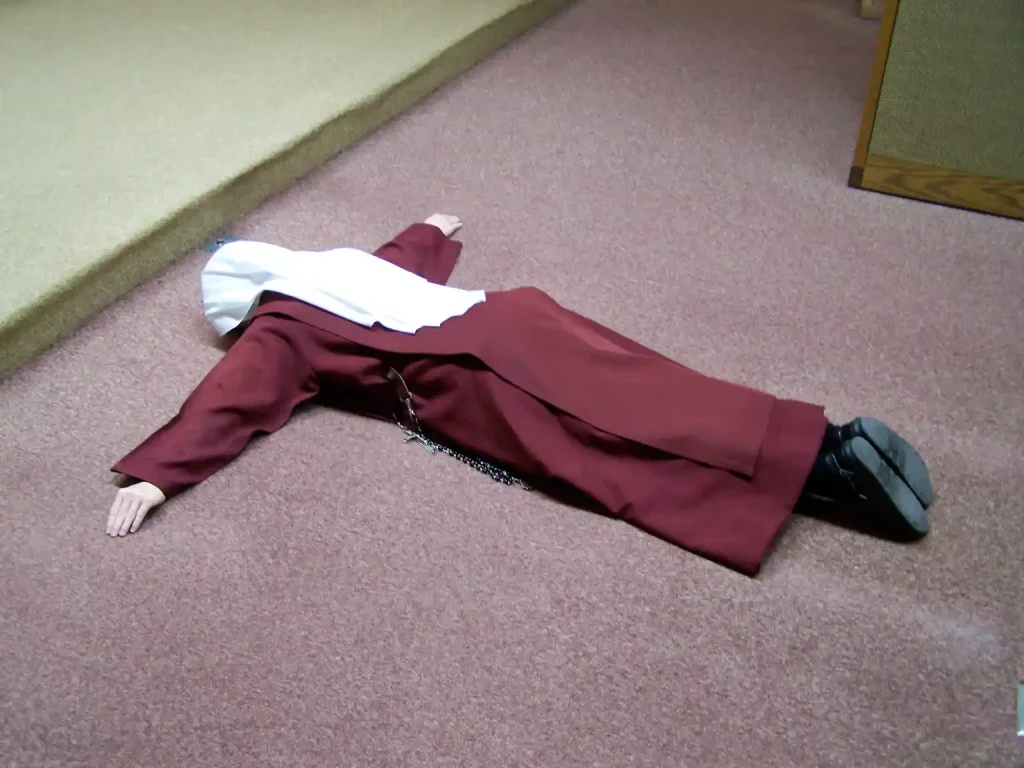
The full prostration either with the arms to the side or the arms above you is a foundational position in Theokinesis.
The prostration is our deepest expression of surrender to The Lord.
Prostration can also be connected to the 7th Fiery Feather (Death).
3 Flaps
3.22: Prostration Improvisation
This is an improvisation that roots itself in prostration or proststrovisation. Begin a full prostration that personally resonates. This position is kept until one is moved to dance. In the best case scenario, it is the Holy Spirit moving one to dance, but this cannot occur by works, only by faith (trust) in God.
3.23: God’s Pancake
Become God’s pancake. Make use of successional movement, sliding movement, and possibly even being flipped over as if on a frying pan heated by God’s fire of Eternal Love. All of these while in deep connection with the humbling ground.
3.24: Three-Dimensional Prostration
In usual prostration, only one side is entertained (the belly side). By making use of remix or water-to-wine, prostration takes on any side of the body. When the body is floppy on its side, we can say that is a fetal prostration, and when we are on our back as if haven fallen backwards (Isaiah 28:13), this is like a humbling position admitting one’s shortcomings.
Hands to Chest
So we have come to know and to believe the love that God has for us. God is love, and whoever abides in love abides in God, and God abides in him.
1 John 4:16
The hands to chest position is a form of hug. Heavily recommended is sleeping in this position with either one or both hands as a symbol of unconditional love for God the Father, God the Son, and God, The Holy Ghost.
3 Flaps
3.25: Giving
From the hands to chest position, we can gesture giving our heart to: (1) God; (2) Neighbor; (3) Earth; (4) Sky; (5) Animals.
There are many ways to execute this gesture, depending on individual style. Here are some examples.
3.25a: Fog
The arms and hands are a fog of love releasing to its object of love.
3.25b: Puff Balls
The hands throw puff balls of love toward its object of love.
3.25c: Butterfly
The hand is a butterfly of love flying to its object of love.
3.25d: Golden Cord
Pull out from the heart a golden cord toward the object of love. The cord can be various sizes from thread to rope.
3.26: Receiving
From the hands to chest position, the hands can gesture various signs of receiving. Just like with giving, we can gesture our ability to receive: (1) God; (2) Neighbor; (3) Earth; (4) Sky; (5) Animals.
There are a many ways to execute this gesture, depending on individual style. Here are some examples.
3.26a: Fog
The arms and hands are gathering a fog of love into your heart.
3.26b: Pearl
Receive a pearl in the hand and reverently pull this pearl into your heart.
3.26c: Golden Cord
Pull into the heart a golden cord from the object of love. The cord can be various sizes from thread to rope.
3.27: Give, And It Will Be Given To You
Give, and it will be given to you. A good measure, pressed down, shaken together and running over, will be poured into your lap. For with the measure you use, it will be measured to you.
Luke 6:38
One might explore the dynamic exchange of both offering and accepting at the same time. Often, while one hand extends a gift, the other may be accepting one. At times, both hands might present a gift, and upon its reception, another gift is bestowed in return. Such is the nature of love; it perpetually generates more love.
Moment of Silence
For God alone my soul waits in silence, for my hope is from him.
Psalm 62:5
A moment of silence brings the wonder of the present moment in connection with our fondness for God and each other. The Quakers heavily make use of silence in their congregations.
Embodied Contemplation
Contemplation involves a deep, reflective prayer, often characterized by a quiet and attentive focus on God, seeking to understand His will and presence in a more profound way.
Here we contemplate with not only our mind but our body. We may be drawn to move in a certain way, but we may also open the mind to ponder. For instance, an embodied contemplation on the orans while I was engaged in orans brought forth different forms of offerings for God despite the gesture remaining the same: (1) a gift held above; (2) one’s self as a vessel; (3) arms of embrace. For complete list see Wing 1 (Praise).
Similarly, a concept from scripture or actual passage read aloud can be contemplated on while letting the body move freely as would a public speaker making good use of gesture.